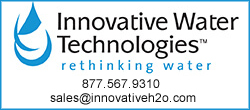  

12/13/2024
WT Staff
 Got water questions? Got water questions? Give us a call at 877-52-WATER (877-529-2837), or email us at info@wtoh.us
December 13, 2024 1141 am EST
Styrene spill in Grand River watershed
Hazardous Spill File from the records of the Ohio EPA
Grand River watershed: a large spill of styrene monomer was reported spilled yesterday on Hardy Rd, Painesville Township of Lake County. This is a colorless oily liquid, and highly flammable. It can cause moderate irritation of eyes and skin. Inhalation of vapor at high concentrations can cause dizziness, drunkeness, and anesthesia. (USCG, 1999)
According to National Oceanographic and Atmospheric Administration (NOAA), styrene monomer is highly flammable and insoluble in water. Vapor is heavier than air and may travel considerable distance to a source of ignition and flash back. At elevated temperatures such as in fire conditions, polymerization may take place which may lead to container explosion. (USCG, 1999)
Reactivity Profile: STYRENE MONOMER is a colorless, oily liquid, moderately toxic, flammable. A storage hazard above 32°C, involved in several industrial explosions caused by violent, exothermic polymerization [Bond, J., Loss Prev. Bull., 1985, (065), p. 25]. Polymerization becomes self-sustaining above 95°C [MCA SD-37, 1971]. Presence of an inhibitor lessens but does not eliminate the possibility of unwanted polymerization. Violent polymerization leading to explosion may be initiated by peroxides (e.g., di-tert-butyl peroxide, dibenzoyl peroxide), butyllithium, azoisobutyronitrile. Reacts violently with strong acids (sulfuric acid, oleum, chlorosulfonic acid), strong oxidizing agents [Lewis, 3rd ed., 1993, p. 1185]. Reacts with oxygen above 40°C to form explosive peroxide [Barnes, C. E. et al., J. Amer. Chem. Soc., 1950, 72, p. 210]. Oxidizes readily in air to form unstable peroxides that may explode spontaneously [Bretherick 1979 p.151-154, 164]. Mixing styrene in equal molar portions with any of the following substances in a closed container caused the temperature and pressure to increase: chlorosulfonic acid, oleum, and sulfuric acid [NFPA 1991].
According to Shell petroleum products, "Styrene monomer is an industrial chemical derived from petroleum or natural gas by-products and which, under normal conditions, is a clear, colourless liquid. It has been synthetically produced for more than 70 years – in 2013 global demand was over 27 million tonnes - but it is also naturally occurring in a number of common foods."
Styrene monomer is typically converted or ‘polymerised’ into pellets which can be heated, fused and moulded into plastic components. Synthetic styrene is an important raw material for industry because it is the chemical ‘building block’ for creating a multitude of versatile plastics and synthetic rubbers with beneficial properties including strength, durability, comfort, light weight, safety and energy efficiency. The key styrene derivatives include:
- polystyrene (PS)
- expandable polystyrene (EPS)
- acrylonitrile butadiene styrene (ABS)
- styrene butadiene rubber (SBR)
- unsaturated polyester resins
- styrene butadiene latices
Safe Drinking Water Act
See how drinking water facility compliance compares in Ohio, New York, Georgia, Louisiana and California, here.
|
|
|
|




